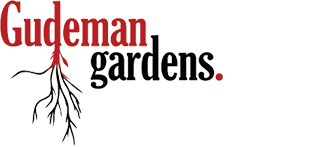OUR PROCESS
Initial Lead Meeting
We will discuss your needs during the first phone call and determine if an on site meeting is necessary before we begin. We will then determine the next steps to take towards your project, whether your needs are simply trimming an overgrown hedge or wanting a full site master plan and installation proposal.
Design
Our custom design process may involve several meetings with you to refine the overall plan to agree with both your aesthetic desires and also your estimated budget. The designing and planning is often an afterthought for other companies where it is really the most important step of the process. We focus much of our time thinking and planning the layout and individual plant placement to create an oasis for each and every project!
Click here for more information on the design process.
Installation
Gudeman Gardens has years of experience working on a various sized installation projects from front yard landscape beds to complex green roof systems involving a multitude of other trades. Our intent is to work WITH the other contractors on site (if any) to create the best possible final product which will beat your expectations.
Click here for more installation information.
Green/Sustainable Practices
Green & Sustainable practices are environmentally friendly resulting in a lower maintenance cost. These practices include methods such as composting, collecting rainwater, xeriscaping (a landscape requiring minimal or no irrigation once established), using recycled and organic products, and not using synthetic chemicals on your lawn.
- Native plants should be installed as they require much less water to keep alive.
- By carefully placing trees, landscaping can reduce air conditioning costs by up to 50 percent, by shading the windows and walls of a home. American Public Power Association.
- Gudeman Gardens employs the use of salvaged construction materials when possible and prefers to transplant existing plant material as opposed to discarding.
- Rain gardens and water catchment systems can be implemented for the reuse of rainwater for irrigation systems and hand watering
- Use of products from local sources as opposed to materials shipped in from across country
- Using products that contribute to the U.S. Green Building Council’s (USGBC) Leadership in Energy Efficient Design (LEED) standards



